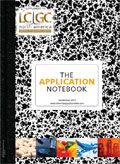QuEChERS Sample Preparation for LC–MS-MS Determination of Avermectins in Meat and Milk
Avermectins are 16-membered ring macrolide drugs that are used as veterinary antihelmintics. The lowest allowable limit for these compounds in food products is set based on worldwide safety evaluations. Regulatory MRLs for avermectins can vary worldwide but are generally in the ppb concentration range. The sensitive analysis of avermectins in food products such as milk and meat can be challenging due to their complex sample matrices.
Avermectins are 16-membered ring macrolide drugs that are used as veterinary antihelmintics. The lowest allowable limit for these compounds in food products is set based on worldwide safety evaluations. Regulatory MRLs for avermectins can vary worldwide but are generally in the ppb concentration range. The sensitive analysis of avermectins in food products such as milk and meat can be challenging due to their complex sample matrices.
QuEChERS is a simple and straightforward sample preparation technique that involves a salting-out liquid extraction followed by optional dispersive solid phase extraction (dSPE). Sample preparation using QuEChERS allows for fast throughput and high sensitivity analysis of food products. Although QuEChERS is commonly used for multi-residue pesticide analysis in fruits and vegetables, it is also applicable in the analysis of veterinary drugs in livestock products. In this application note, milk and ground beef are prepared and analyzed for avermectins at the ppb level, using QuEChERS methodology and LC–MS-MS.

Table I: Recoveries of avermectins from ground beef and whole milk samples
Instrumentation & Consumables
Sample Preparation:
Initial Extraction (QuEChERS):
Whole milk or ground beef was placed into a 50 mL centrifuge tube. 10 mL acetonitrile was added and the tube was shaken vigorously for 1 min. The contents of DisQuE pouch salts for CEN QuEChERS (p/n 186006813) was added and the tube was shaken again for 1 min. The sample was centrifuged and a 1 mL aliquot of the supernatant was taken for dSPE cleanup.

Table II: Matrix effects of avermectins from ground beef and whole milk samples. A value > 100% indicates ionization enhancement A value
dSPE Cleanup
A 1 mL aliquot of supernatant was transferred to a 2 mL dSPE cleanup tube containing magnesium sulfate and C18 sorbent and shaken vigorously for 1 min. The sample was centrifuged and an aliquot was transferred to a Maximum Recovery Vial (p/n 600000670 CV) for LC–MS-MS analysis.
UPLC Conditions
System: ACQUITY UPLC
Column: XSelect CSH C18, 2.1 × 100 mm XP 2.5 µm (p/n 186006103)
MS Conditions
System: Xevo TQ-S
Ionization mode: electrospray positive (ESI+ )
Results and Discussion
For the analysis of avermectins in challenging matrices like whole milk and ground beef, good recoveries were obtained using DisQuE pouch sample preparation. The incorporation of a dSPE clean-up step prior to LC–MS-MS analysis aids in the reliable quantitation of avermectins at low ppb concentrations in complex matrices.
Conclusion
- The DisQuE pouch (QuEChERS) protocol is an easy and effective method for the extraction of avermectins from livestock products.
- DisQuE sample preparation provides excellent sample cleanup prior to LC–MS-MS analysis, with high analyte recoveries and minimal matrix effects.
- DisQuE extraction combined with LC–MS-MS analysis using eXtended Performance [XP] 2.5 µm columns provides low ppb quantitation of avermectins in complex matrices, enabling reliable testing.
For full application note, visit www.waters.com/4440.
©2012 Waters Corporation. Waters, The Science of What's Possible, ACQUITY UPLC, DisQue, XSelect, Xevo are trademarks of Waters Corporation.
Waters Corporation
34 Maple Street, Milford, MA 01757
tel. (508) 478-2000, fax (508) 478-1990
Website: www.waters.com
















